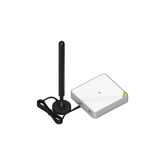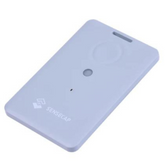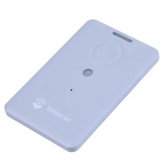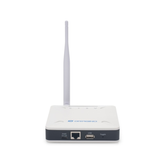Understanding LoRaWAN: Transforming IoT Connectivity
Summary
Delve into the world of LoRaWAN with our comprehensive blog! We kick off with an insightful Introduction, unraveling the essence of this transformative IoT connectivity protocol. Next, we explore the diverse Applications of LoRaWAN, from smart agriculture to urban infrastructure. But every innovation has its limits, so we dissect the Limitations, shedding light on its challenges. Finally, we wrap up with a Conclusion that encapsulates the potential and pitfalls of LoRaWAN. Ready to unlock the future of IoT? Click here to read more!
Introduction
In the constantly evolving arena of the Internet of Things (IoT), where gadgets are linked together in increasing numbers to improve user experience and productivity, one technology in specific, called LoRaWAN, signifies apart because of its capacity to offer long-range communication and low power connectivity.
For reliable long-distance data transmission, a multitude of industries, including smart cities, agriculture, logistics, industrial automation and numerous applications depend on robust connectivity solutions.
We explore the essential characteristics, uses, and effects of LoRaWAN on the Internet of Things (IoT) ecosystem in this blog post.

A wireless communication protocol LoRaWAN also referred to as long-range wide-area network, was developed for communicating over long distances between low-power devices.
Here is an overview of its primary components, along with its functioning:
- LoRa: LoRa stands for Long Range. It has been rendered feasible by physical layer technology. It provides long-range communication at relatively low power consumption through the utilization of spread spectrum modulation techniques. LoRa devices can connect over long distances up to several kilometres even in densely populated cities with structures like skyscrapers.
- Key Components: The key components of a LoRaWAN network include network servers, gateways (that serve as middlemen between end devices and the network server), application servers (that process data for specific applications or services), and end devices (that include sensors and other data gathering devices).
- Low Power: Low power consumption is one of the key advantages of LoRaWAN technology. Nodes also referred to as devices, are typically powered by batteries that last for years without needing frequent replacement. Due to this, it is ideal for applications with limited power supply or accessibility.
- Topology: In general, LoRaWAN utilizes a star-of-stars network topology. In this arrangement, one or more intermediary devices known as gateways, enable end devices like sensors, actuators, etc. to connect with a centralized network server. Upon receiving the messages from endpoints within their coverage area, gateways forward them over a backhaul connection, typically the internet to the network server.
- Device Classes: In order to satisfy the requirements of diverse application scenarios, LoRaWAN supports multiple device classes. Class A, Class B and Class C devices belong to these classes. Class A devices consume the least amount of electricity but offer little flexibility in communication, Class B devices in LoRaWAN offer scheduled receive windows, balancing low power consumption with increased communication flexibility. On the other hand, Class C devices consume more power but provide continuous connectivity.
- Security: One essential component of LoRaWAN is security. The data sent between devices and the network server is ensured to be authentic, private, and intact through the use of encryption and authentication methods. Secure communication additionally includes the implementation of key management and secure key exchange protocols.
- Scalability: LoRaWAN networks are capable of seamlessly expanding from a few devices to thousands or even millions of devices. LoRaWAN is suitable for extensive IoT deployments due to its scalability, long-range, and low-power features.
- Cost Effective: When considering alternative communication technologies such as Wi-Fi or cellular, the infrastructure needed to establish LoRaWAN networks is comparatively less expensive. Due to this, LoRaWAN is an affordable option for extensive IoT deployments. Furthermore, because LoRaWAN devices require fewer external power sources or frequent battery replacements, their low power consumption lowers total costs.
- Compatibility: LoRaWAN is a universal standard that facilitates smooth communication between devices developed by various manufacturers within the same network. Developers can select from a range of LoRaWAN compatible devices and solutions due to its interoperability, which encourages creativity and competitiveness in the IoT market.

APPLICATIONS OF LoRaWAN
LoRaWAN is suitable for a wide range of IoT applications across many industries due to to its scalability and versatility. Some noteworthy applications are:
- Smart Cities: Smart parking, trash management, street lighting, environmental monitoring, sensor monitor bridges, roads, traffic data collection and infrastructure monitoring are just a few of the smart city applications made possible by LoRaWAN. Cities can use it to maximize resource utilization, cut expenses, and boost general productivity.

- Agriculture: In precision agriculture, LoRaWAN can be employed to track temperature, humidity, crop health, and soil moisture. It can also be employed to track the location, utilization, and efficiency of agricultural machinery and improving scheduling of maintenance. LoRaWAN enables remote monitoring of fields, increasing crop yields, preserving water, optimizing irrigation and livestock by farmers, thereby mitigating human labour and enhancing decision-making.

- Healthcare: LoRaWAN is employed in healthcare sector to track assets in hospitals, monitor the surroundings in healthcare facilities, and remotely track patients. It renders feasible for healthcare practitioners to increase operational effectiveness and provide better treatment. It also improves the security of patients and healthcare management by enabling devices to provide rapid and consistent communication during emergency situations.

- Industrial IoT: In industrial contexts, LoRaWAN is utilized for inventory management, asset tracking, predictive maintenance, and remote machinery and equipment monitoring. It helps businesses reduce downtime and increase operational efficiency.

- Smart Metering: Applications for smart metering such as gas, water, and electricity metering, utilize LoRaWAN. Utility firms may employ it to identify leaks or sabotage, optimize distribution networks, and remotely monitor consumption. Allows meters to provide usage data in a secure manner, removing the need for manual reading and increasing billing accuracy.

- Supply Chain Management and Logistics: LoRaWAN simplifies the process to track and monitor shipments, vehicles, and facilities in supply chain management and logistics. It improves security, optimizes routes, and gives visibility in real time. Sensors monitor temperature-sensitive cargo while it is in transit, guaranteeing both regulatory compliance and quality assurance.

- Home Automation: Applications such as smart lighting, energy management, HVAC control, and security systems and many more have been rendered possible by the LoRaWAN technology in smart buildings and residences. Appliances, thermostats, and lighting may all be controlled remotely by residents. Energy efficiency, convenience, and simplicity are all improved.

- Monitoring of Environment: Using LoRaWAN sensors, environmental factors such as temperature, humidity, and water quality, among many others, can be remotely monitored. Peculiar conditions in the environment can set off alerts, enabling swift action in the case of potential hazards or pollution concerns.

- Tracking Wildlife and Conservation: LoRaWAN technology is utilized by researchers to monitor the activity and migrations of wildlife in remote places, which aids in ecological dynamics research and conservation efforts. LoRaWAN data analytics provide significant insights regarding the health of habitats, population patterns, and wildlife behavior. IoT enabled by LoRaWAN is being used to prevent poaching of Africa's endangered species.

LIMITATIONS:
LoRaWAN, technology has many drawbacks despite its many benefits for IoT applications.
- LoRaWAN has a restricted amount of bandwidth since it uses unlicensed spectrum for its operation. Applications that require high data rates can be influenced by this since it could result in restrictions on the amount of data that can be sent.
- LoRaWAN might exhibit higher latency compared to other wireless technologies like cellular or Wi-Fi.
- While LoRaWAN can support a large number of devices, it has limits to its scalability. Sometimes, it might lead to congestion, connectivity issues and poor performance.
- LoRaWAN uses unlicensed ISM channels, it can be interfered with by other devices using the same frequency range. The range and propagation of signals can also be impacted by environmental elements like plants, buildings, and topography.
- In densely populated regions, obstructions like buildings and interference from other wireless devices may hinder its operation.
- Regulations and compliance constraints, especially with regard to the usage of unlicensed spectrum and transmission power limitations, may apply to LoRaWAN deployments. Network designs and deployment scenarios may be limited in order to comply with local legislation.
With long-range communication, low power consumption, and affordability as top priorities, LoRaWAN is still a viable option for Internet of Things applications in spite of these drawbacks. But it's crucial that deployers and developers carefully consider these drawbacks to decide whether LoRaWAN is the best option for their specific applications.
CONCLUSION:
In conclusion, LoRaWAN is a distinctive technology with tremendous potential for a variety of entities. Applications seeking effective wide-area communication such as smart cities, agriculture, logistics, and environmental monitoring many more applications would be ideal for its low power, long-range capabilities.
LoRaWAN's flexibility and scalability make it achievable to set up the technology economically, regardless of challenging or remote regions, providing communities and enterprises access to insightful and useful data.
LoRaWAN promotes innovation and efficiency by facilitating effortless integration of IoT devices, which subsequently enhances the productivity and sustainability.
Additionally, the openness of LoRaWAN supports cooperation and compatibility, which subsequently stimulates the development of a broad spectrum of applications and a robust ecosystem of goods and services.
Regarding the confidentiality and cyber hazards its sophisticated security protocols ensure the privacy and integrity of data transmission.
LoRaWAN is expected to be an essential force in shaping the future of connectivity as the Internet of Things grows, enabling smarter, more connected environment that improve the quality of life and boost economic growth.
LoRaWAN has the potential to transform how we interact with the world around us and open up new possibilities with further advancements and widespread adoption.










